March 3rd 1998 marked the 125th anniversary of Peerally’s arrival in Trinidad. His descendants marked this momentous occasion with a Peerally family reunion. In this piece Zahid Mohammed, a descendant of Peerally, lovingly tells the story of Peerally and Kosemeea. Haji Yacoob Ali, current President of ASJA is also a descendant of Peerally. Note that references to particular persons state is relative to 1998 as with the vagaries of time many others may have passed on. May they all be blessed.
Historical Perspective of the Peerally Lineage
“O Mankind! Lo! We have created you from male and female and have made you nations and tribes that ye may know one another. Lo! The noblest of you, in the sight of Allah, is the best in conduct. Lo! Allah is Knower, Aware.” (Sura 49 Ayat 13)
There are many of us who are present here today whom many of us may have never known before and there are many of us present here today whom many of us may have known, yet not aware that we all belong to the Peerally Lineage. This, then, is a very unique, special and significant occasion, that in spite of our busy and diversified lives, we have been able to come together to commemorate an event that has impacted so tremendously on our lives.
Over the years we certainly have attended many functions on occasions such as weddings, birthday parties, birth ceremonies, wedding anniversaries, etc., why then, should we not meet to commemorate an event that occurred over one century ago and which has affected our lives in so many ways?
With the abolition of slavery by the British Parliament in 1807, the British Government was faced with a dilemma in respect of her huge overseas plantations in the West Indies, Fiji, Mauritius and parts of Africa.
By the year 1818, Britain, by means of a company, known as the East Indian Company was in control of very large parts of India. By the year 1858, she was in virtual control of the whole of India, and so, in order to maintain her huge estates overseas, she turned to the labour market in India.
Repealing a previous act of April 14’h 1839 which prohibited the emigration of Indians to the West Indies and introducing a new act No. 21 of 1844 in the Indian Parliament, allowing for the emigration of Indians to Guyana, Jamaica and Trinidad, the first ship load of Indian Indentured Labourers, two hundred and twenty five in number aboard the Fath al Razack, arrived in Trinidad on the 30th May 1845.
This journey of indentured labourers continued for a span of seventy two years and ended when the last ship, the S.S. Ganges arrived in Trinidad on the 22nd April 1917. That completed 819 journeys across the Atlantic. By then approximately one hundred and forty seven thousand indentured labourers had arrived in Trinidad.
Among the many ships that left the Calcutta Port in India for Trinidad was the Howrah. Aboard, as it set sail on the 27th November 1872 were 234 men, 121 women, 48 boys, 35 girls and 24 infants. There were some who came with whole families while others came all alone. Among those travelling alone was a young man, 22 years old, by the name of Peerally, son of Ahmed Hosain.
 Peerallv was already married and had just begun a family with one or two children. The drama in his life began after a family quarrel at home and so he became an easy target for the British Recruiter.
Peerallv was already married and had just begun a family with one or two children. The drama in his life began after a family quarrel at home and so he became an easy target for the British Recruiter.
Not knowing exactly where or how far he was going, he gave his consent to emigrate as an indentured labourer and soon he was on a train heading for a far away land never to return to his family. He travelled all the way from the village of Durgabola, Muzaffarpur, in the state of Bihar to the sea port of Calcutta where, on the 27th November 1872, he boarded the ship Howrah. Muzaffarpur is approximately 75 km from the Nepalese border near the Himalayan Range.
After a journey of three months and three days at sea, the Howrah finally arrived in Trinidad on the 3rd March 1873, one hundred and twenty five years ago. Out of the total human cargo that left Calcutta, there were a few who did not make the journey to Trinidad, that is, those who died at sea and were buried at sea. They were 1 man, 4 women, 3 boys, 2 girls and 3 infants.
Out of those who survived the journey, the numbers that were distributed to various estates were 227 men, 113 women, 40 boys, 30 girls and 21 infants. Those sent to the colonial Hospital were 2 men and 1 woman. nose sent to the convalescence depot were 4 men, 3 women, 2 boys and 1 girl. The number of orphans sent to the orphanage were 3 boys and 1 girl.
Peerally was assigned to the Phoenix Park Estate. There he carried on with his barrack type existence which was no more than a glorified form of slavery. The British’s only concern was to get the most labour out of you at the minimum cost possible while they camed on with their comfortable and luxurious life style.
After the 5 year indentureship, he moved to California where he got married to Kosemeea. There is no evidence to show how he earned his livelihood at this point in time, but there were sugar cane and cocoa plantations around and it is assumed that he and his wife continued to work on these plantations.
 It appears that he stayed at California for a considerable length of time as all his eight children were born at California. The eight children in order of age were Gareeb a/k Abdul Gulab, Raesam a/k Rakmee,. Isahak, Sahidan, Goolam Hosein, a boy whose name we do not know, Rajali and Habib a/k Magran. The sixth child, whose name we do not know, died when he was 10 years old. It is said that the mother Kosemeea used to weep night and day over the loss of her dear son.
It appears that he stayed at California for a considerable length of time as all his eight children were born at California. The eight children in order of age were Gareeb a/k Abdul Gulab, Raesam a/k Rakmee,. Isahak, Sahidan, Goolam Hosein, a boy whose name we do not know, Rajali and Habib a/k Magran. The sixth child, whose name we do not know, died when he was 10 years old. It is said that the mother Kosemeea used to weep night and day over the loss of her dear son.
Peerally then moved from California to Poole near Rio Claro with his family as he was offered contract work in one of the estates. This was an opportunity to improve himself financially. His son Isahak, however, went to work at Caroni Ltd., Waterloo Estate. He first started as an office boy, but because of his enterprising nature, he soon moved up to the distillery section. Isahak later left that job and joined his father Peerally at Poole.
It appears that Peerally and his wife worked on several estates. One such estate was the Bigesse Estate. Here, the owner having sued him for damages he left and worked on another estate.
Life on those estates was not much better than the 5 year indentureship period. To show what life was at the time, I quote from a letter sent from one of Peerally’s sons, Rajali to his daughter Sarephan who was at the time studying in England. With reference to the mother Kosemeea, it says:- “She told me about her life, when at mornings she goes to work, she used to have a little cooked food from the night’ before, she ate it before going to work. She had to weed a task, then when 9 o’clock had come she felt a little hungry, she always carried a calabash boley full of water, when this time had come she ate a little of what she had brought with her and drank a little of this water and completed her task while I was in her abdomen. Every day she completed a task of land. After completing her task one day on that very night she gave birth to Rajali. “
Later in life, Kosemeea became blind and so she could not work any more. Raza Hosein as a little boy, a stepson of Rajali, used to take her for walks along the Riverside Road in Poole.

Typical carrot (thatched roof) house
Peerally and his two sons Rajali and Goolam Hosein built a large carrot house and a wooden shop at Riverside Road in Poole. A cocoa house (typical cocoa house shown in picture, the roof slides out to facilitate cocoa drying, and slides back in place to protect cocoa when the rain falls) was then built between the carrot house (thatched roof house made with palm leaves, typical as shown in picture below) and the shop. Goolam Hosein lived in a room under the cocoa house. Peerally Kosemeea, Rajali and his wife Rahattan and two step children, Raza and Saliman resided in the shop house.
Isahak had now joined them at Poole. Searches made both at the District Revenue Sewices in Rio Claro and at the Red House (state registry office) revealed that no lands were registered in Peerally’s name. However, his son Isahak, who was without doubt, the most enterprising of all the children, was the first at 23 years of age, to purchase land. This is a 6 acre parcel of land at Lazari Road in Poole, registered under the Real Property Ordinance Volume 217, Folio 515, bought in 1910. This parcel of land is still in the Peerally family in the names of Ayoub and Yacoob. Other lands bought, mainly 5 acre and 6 acre blocks, were in the names of Isahak and or Rajali and in a few cases, Goolam Hosein. Lands were also bought in the Biche Area. These lands were used for cultivating cocoa and coffee and in some instances rice. Many of these parcels of land have now been sold. Interestingly, two parcels, each comprising 4 acres, 3 roods, 39 perches were subsequently sold between 1930 and 1933 to Naboodan and Mohammed Hosein aka Moon of Rio Claro.

Typical cocoa house
Gareeb, the eldest child of Peerally, married Jamoorath who was from Biche. Gareeb settled in Biche where he bought a small 5 acre estate of cocoa and coffee at Wade Local Road. Gareeb was a tailor by profession but he also did transport work with his donkey cart. He was mild in character and very easy going. He was the first in the Peerally family to purchase a motor car, a three peddle Ford, Registration No. P 1241. The registration number would no doubt give you an idea of the amount of vehicles on the road at the time.
Gareeb had eight children. They were Gool, Kadiran, Haniff, Nagiran, who died 1 to 2 months old, Hadlkan, Azim ail Sahadath, Sadick and Hakiman, who died 1 to 2 years old. Today there are only two alive, Hadikan and Sadick.
While at Biche Jamoorath’s brother Gafoor and his wife Gafooran died leaving six young children. Gareeb and Jamoorath took these children and brought them up. These children were Ayoub, Abidh, Nazar, Naboodan, Hajabiah and Hazra. Incidently Jamoorath had arranged the marriage of Naboodan to Mohammed Hosein also known as Moon of Rio Claro who was employed by De Verteuil to work on his estate. Eventually, by dint of hard work, Naboodan and Mohammed Hosein were able to buy over the entire De Verteuil estate consisting of hundreds of acres. Murtaza Hosein aka Manee, son of Nanka was also brought up by Jamoorath. It is interesting to note that Jamoorath’s own children and these orphan children always lived as brothers and sisters. The terms bhaiah and bahin were always used by the juniors when addressing the seniors.
Kosemeea was the first to die. Her life was one of toil and struggle. She had worked among the French Creoles where she acquired the knowledge of Patois (hroken French), she also spoke Hindi. The dominant languages in those days were Patois and Hindi. English was mainly spoken by the educated elite. Kosemeea was of short stature and in her old age her hair was grey.
Kosemeea was a tower of strength to Peerally. They had both left their native land to begin a new life in a distant land. Now his dear companion was no longer at his side and he had to continue the rest of his years without his main support.
The years went by. Peerally now about eighty years old, then passed away and was buried at Tableland. Gareeb, accompanied by his eldest son Gool, left Biche and attended the funeral.
Peerally was fair skinned, robust and healthy. He had a long white beard and long hair up to his neck. He was of short stature, just 5 ft. 4″. He normally dressed in a dhoti and a kurta shirt but on Jumma days, when he walked 3 miles to Tableland Masjid, he used to wear a pyjama and kurta shirt. He also attended Moulood Sheriff Functions. Sometimes he used to leave his residence at Poole and walk about 22 miles to Biche where his son Gareeb lived.
Subsequent to Peerally’s death, his grandson Gool, who was married to Baheedan, died in tragic circumstances. Gareeb, together with his wife Jamoorath, Azim, Sadeek, Baheedan, and her three children, Shamiroon, Hashiroon and Noor then moved to Poole. Not long after Gareeb also passed away’and was also buried at Tableland.
Prior to leaving Biche, Gareeb’s eldest daughter, Kadiran was married to Shair Mohammed a/k Dole and Hadikan was married to Hosein Sabaj. Haniff stayed with Rajali and Isahak assisting then in the Estate. Eventually, he was married to Subratee’s daughter Sheila from Moruga. Haniff later settled at Drayton Street, San Fernando. He died at a fairly young age of 52 years. His eldest son Rasheed has also died. His six other children and his wife Sheila are all alive.
With the death of Gareeb, Jamoorath left Poole with the rest of her family and rented a house at the wharf in San Fernando. Here influenced by her sister-in-law, Sahidan, who was herself a very enterprising business woman, Jamoorath went into the coal business. With the money she saved she bought two lots of land at 65 Lyndon Street, Curepe and together with her two sons, Azim and Sadick built a house, where Baheedan and her three children also lived. This house, built of tapia (thatched roof) and concrete is still standing.
Before Peerally had left California for Poole, his daughter Raesam a/k Raismee got married. Her husband, whose name we were unable to ascertain, was married before and had a son by the name of Deedar Shah. Raismee had two sons through this marriage – Sultan Shah and Hosein Shah. It is assumed that this husband may have died. Raismee then married Abdul Gafoor Khan, who was himself an indentured immigrant. She had two children with him – Sakoor Khan and Haniff Khan. Abdul Gafoor Khan eventually left Trinidad and went to Guyana and since then nothing more has been heard about him. None of the children of Raismee are alive today.
Isahak, who was the third child of Peerally was born on the 24th November 1887, in the 15th year of Peerally’s arrival. His first wife died while giving birth. He subsequently married Saheeban, who already had two children, Shabir and Lazina, from a previous mamage. Of these two only Lazina is alive.
Isahak had six children. These are Acklima, Taslima, Tyab, Yacoob, Ayoub and Haneipha. Of these six children, there are four alive. Tyab died when he was six months old and Taslima died on 3rd April, 1996.
Isahak was one who spared no efforts in educating his children as well as himself. He knew English, Hindi, Urdu, Persian and could read Arabic and was capable of discussing any issue of the day with any educated person.
Taslima became the second person to pass the Senior Cambridge Examination in the Peerally Lineage. She was also the second to go abroad. She was a licensed midwife, a Public Health Visitor and a graduate teacher. Yacoob became the youngest pharmacist in Trinidad and Tobago and the first Attorney at Law in the Peerally family. In the religious field, he held the post of President of the Central Muslim Youth Organisation for many years. Ayoub became the first university graduate among the descendants of Peerally. Haneipha, who is the youngest surviving grandchild of Peerally is qualified in beauty culture. She is a resident in Canada, is married and has three children.
After the witchbroom menace in the estates and the resulting drop in production in cocoa and coffee, Isahak moved to San Fernando where he bought several properties including one at the Coffee and Maryiat Street where he and his family then lived. He then went into the coal business. He died on the 24″ September, 1956 at the age of 69 years. His wife Saheeban died on the 15″ March 1995 at age ninety. Sahidan.was the second daughter of Peerally. She was married to Gooljar Baksh and settled at Robert Village in Tableland. Gooljar arrived from India at age 12 and went to Brother’s Estate. Elahie, his elder brother, and an indentured labourer, did not allow his younger brother to serve the indentureship.
Sahidan and Gooljar both worked as labourers but Sahidan soon branched off into business, marketing coals, ground provision, fruits and vegetables. Sahidan had seven children, these are Ibrahim, Asgar, Safiran Shah, Haffizan Shah, Sakina Karamat, Ishmael and Jeanette. Today, there are four alive. These are Ibrahim, Asgar, Sakina Karamath a/k Jumrattan and Ishmael. Of all Peerally’s grandchildren Ibrahim has the largest family of 14 children. Sahidan also acquired valuable property at Drayton Street, San Fernando.
Goolam Hosein was married to Sajlee. He had no children. He was closely attached to Isahak and Rajali and involved in their business activities. At Poole he carried on a soft drink factory.
Rajali was married to Rahattan who had three children from a previous marriage. These are Zalleelum, Raza and Saliman. Today only Raza is alive.
Rajali himself had three children, Khalikan, who died 9 months old, Saphralli and Sarephan. Today only Sarephan is alive. Rajali was also concerned about his children’s education. Sarephan was the first person in the Peerally Lineage to pass a Senior Cambridge Examination and the first to go abroad to study. She graduated in England in Radiography. At present she is retired but still very active. Rajali also owned a soft drink factory in San Fernando.
Habeeb a/k Magran the last child of Peerally was married to Tajeeran. He had no children.
Coincidentally, travelling with Peerally aboard that same ship, the Howrah was a family of six. They were Khoda Baksh, his wife and four children. One of the children was a five year old boy by the name of Soobhan. They were assigned to the Aranguez Estate. Later they moved to Chin Chin in Cunupia where Soobhan was married. One of Soobhan’s grandchild by the name of Jaitoon got married to one of Peerally’s grandchild Sadick and these two persons are my parents.
Peerally, like so many Jahaji Bhais who left the Indian sub continent was brought to these shores with almost nothing in his favour except for his own capacity for hard work and a determination to improve his life. He lived and worked in tbis country for long and arduous years. In spite of the harsh conditions under which he came and settled, his descendants, now dispersed not only throughout Trinidad, but also other parts of the world as far afield as United Kingdom, Canada, and the U.S.A, have distinguished themselves in the fields of medicine, law, education, religion, business and the public service. Even in the non academic field, contributions have been made. If I may refer to an article written in the Newsday dated December 13th 1997 at page 26, by Ibrahim Baksh, a grandson of Peerally, now much advanced in years but still with us. He had this to say:- “Ever since 1970 (sic) I have journeyed with three horse-drawn carts loaded with cocoa beans for sale in Port of Spain. This I did until 1941 when we got a gas engine truck Faithfully my horse and mules passed over single lane bridges over Poole River at Fonrose, Ste Madeline over Cipero River and others including the Caroni Bridge where my horse took a rest and fed on grass. I have worked driving passenger buses for the Trinidad Government Railway and driving transport trucks for the United States Army at their base here. I served long as a professional tailor of gent suits and have trained many youths in this nation to be tailors. ” These are some of the contributions made by the descendants of Peerally.
In the field of religion no one can deny the impact that Islam has made to Indian civilisation and culture and it was this Islamic culture and civilisation that the Muslims from the Indian Sub-continent brought with them to this country. The Masjids built by indentured labourers at Mucnrapo, San Fernando, Charlieville and Sangre Grande are glowing examples of their exquisite form of Islamic Architecture.
The personal sacrifices of the early Muslim arrivals who assumed the leadership role of Imams and the institution of the maktabs which they established throughout the country are the reasons for Islam being alive today, and the honesty and integrity of the indentured labourers in their daily affairs were all part of their Islamic upbringing. It is this stock from which Peerally and his wife Kosemeea came. You and I therefore, must feel a sense of gratitude for their endeavours in the community.
In this family reunion, we remember those who have preceded us and also the elders who are still with us, for their hard work, dedication and perseverance under sometimes difficult and trying circumstances. Through their hard work and sacrifices, we are now enjoying in this life many of the comforts which they were not privileged to have in their day.
We also wish to thank all those who have contributed in one way or another towards the realization of this family reunion. May Allah Subhaana Wa Ta’aala reward us all.
Inna Lil Lahay Wa Inna Ilaihay Raajayun. From Allah we came and to Him is our final return.
Finally, in spite of our interest in our past and in our roots we, the descendants of Peerally, remain committed to the welfare, advancement and progress of the country of our birth, Trinidad and Tobago.
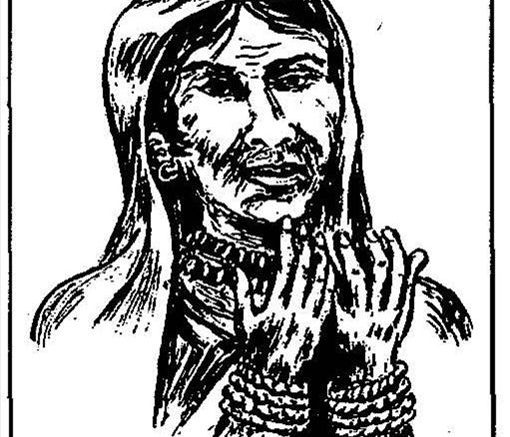
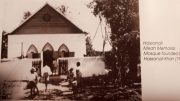
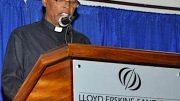
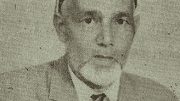
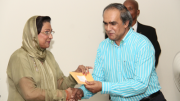
Be the first to comment on "The life and times of Peerally and Kosemeea"